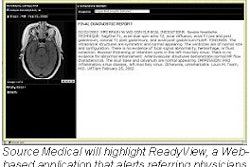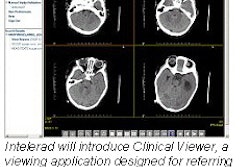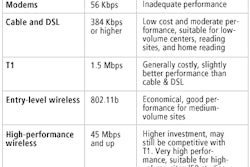CHICAGO - Over the past couple of years, interest in voice recognition technology for radiology reporting has grown at an almost exponential rate. Lower budgets and fewer qualified personnel are congruent factors that have driven many radiology administrators to investigate the efficiencies and efficacies of these devices. For the early adopters of the applications, the long-term results have proven to be of great benefit.
For more than four years, since April 1998, radiologists at the Kaiser Franz Josef Hospital in Vienna having been using voice recognition (VR) tools to streamline their report process. The determinants for bringing VR into the department were the dual needs of reading more studies yet still producing reports in a timely manner.
“In April 1998 approximately 29% of our reports were created using the VR system. By December 2002, 99.4% of the reports generated by our department were created using VR,” Dr. Thomas Ybinger said.
Ybinger presented the results of the 4.5 years his group has used VR in the facility to attendees at the 88th annual RSNA. The institution is a 720-bed tertiary care hospital specialized in oncology and infectious diseases. There are 13 full-time radiologists on staff, along with 8 residents. A speech recognition system (SpeechMagic, Philips Speech Processing , an independent business unit of Royal Philips Electronics, The Netherlands) for producing radiology reports was integrated into the hospital’s RIS-PACS (Siemens Medical Solutions, MagicSAS and Sienet) early in 1998.
Since its introduction to the present day, the system has been used in transcribing more than 300,000 dictations. The group utilizes a four-step process in getting a report ready to send to a referring physician. First, the exam is conducted and the initial report is read out by the radiologist.
Next, the report is reviewed by a medical secretary who corrects VR-generated errors. Lastly, the report is reviewed by the diagnosing radiologist, who makes any necessary corrections/additions, then signs and sends the report to the referring physician.
Under the dictation-based system, it took approximately 10-11 hours to get a report transcribed and shipped. By using the VR technology, the group has been able to average 6.53 hours from the time an exam is performed to the time a report is sent, a time savings of 39%.
“Despite a high number of trainee doctors, 95% of all our reports are signed within 24 hours,” Ybinger said.
The productivity gain has not only been in the reading suite at the hospital. The medical secretaries, who functioned as transcriptionists at the facility, have been able to have their skills used in other job duties since the adoption of the VR system. According to Ybinger, there were five full-time equivalent (FTE) typists for the department in 1998; that figure has been reduced to 3.5 FTEs currently, with the 1.5 FTE reassigned to other administrative tasks within the hospital.
“There’s a natural inclination to want to eliminate all secretarial/transcriptionist positions when first implementing VR technology. We didn’t do that because we didn’t want the radiologists to be spending time they could be reading new exams doing routine administrative work copyediting their reports from the RIS,” Ybinger said.
Another benefit of having a VR system is its tight integration with the RIS. Although a formal study has not been conducted at the hospital, Ybinger noted that anecdotal evidence shared by colleagues and staff shows that retrieving an archived report is much quicker with than before VR. There is also a higher level of satisfaction, approximately 90% after six months of use, with the VR system than there is with the old dictation-based system, he said.
By Jonathan S.
Batchelor
AuntMinnie.com staff writer
December 4, 2002
Copyright © 2002 AuntMinnie.com



















